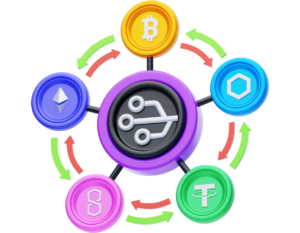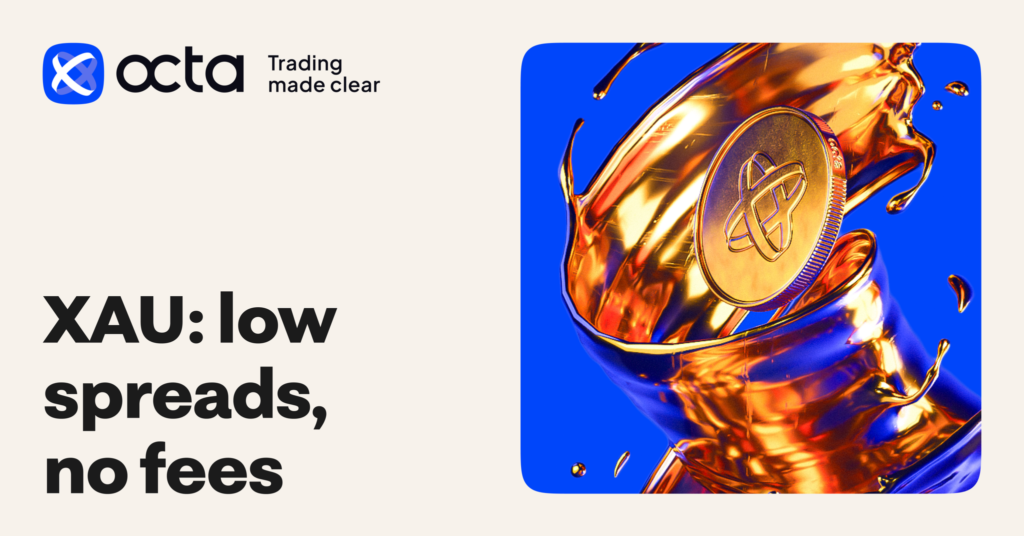The 5 Phases to Mastering Trendlines for Consistent Entries
“Trendlines look simple… a couple of touchpoints, a clean direction, and you’re done. But using them properly is a completely different story. Most traders either force them into place or ignore them entirely. Trendlines are one of the most misunderstood tools in trading. When drawn with intention and a system, they can offer clarity, confidence, and consistent entries.”

Table Of Contents
Trendlines look simple… a couple of touchpoints, a clean direction, and you’re done. But using them properly is a completely different story. Most traders either force them into place or ignore them entirely. Trendlines are one of the most misunderstood tools in trading. When drawn with intention and a system, they can offer clarity, confidence, and consistent entries.
Here are the five phases of mastering this simple but powerful method:

New to forex?
Learn how to trade forex with our PhD membership, it is the complete beginner’s guide to forex trading.

Become a diamiond trader
Cut through the noise to find the exact diamond techniques one top 1% traders know about.

New to crypto?
Skip the hype and plug into the exact strategies smart traders use to build wealth in digital assets.
Phase I: The Overdrawn Phase
This is where it begins. You open your chart and start drawing lines on everything. Highs, lows, channels, retests. It feels like you’re analyzing, but really, you’re just guessing.
You draw trendlines on every swing
You force lines to “fit” your bias
You believe more lines = better insight
The risk: Clutter kills clarity. Most of these lines are noise, not structure.
Let’s dive deeper.
The Overdrawn Phase is seductive. It feels like action. You’re doing something. The chart is no longer empty — it’s covered in insights (or what feels like insights). But what’s really happening is the illusion of analysis.
Many traders, especially in the early stages, equate more markings with more understanding. They want to capture every swing, every nuance. The problem? Not every swing matters. Not every peak and valley is a structure point. When you draw on every wave, you dilute your focus.
This phase is often driven by insecurity. You’re trying to be “right” so badly that you create a mess of lines hoping one will give you the answer. But trendlines aren’t fortune-tellers. They’re tools of structure. They reflect rhythm, not prediction.
What actually happens in this phase:
- You might draw two dozen lines and have no idea which one matters.
- You might find yourself in contradiction — a bearish line on the 15-minute chart and a bullish one on the 4-hour.
- You’ll often chase trades because your lines “confirm” your bias.
This is a dangerous place to trade from. You feel empowered, but you’re flying blind. The goal of this phase is not to skip it — it’s to outgrow it. This is a rite of passage. Every trader starts here. What separates the growing trader from the stuck one is their ability to recognize that more lines don’t mean more accuracy — they mean more noise.
Ask yourself:
- Am I drawing for clarity or for comfort?
- Are these lines helping or confusing me?
- Would I show this chart to a mentor and feel confident in my explanation?
Most likely, you’ll realize the chart is trying to speak — but you’ve silenced it with clutter.
Phase II: The Doubt Phase
Now you’re frustrated. The lines don’t hold. The market doesn’t “respect” them. You start to wonder if trendlines even work.
Your entries feel random
You lose confidence in your analysis
You erase and redraw constantly
The trap: Most traders quit here. But this is the turning point. Frustration can lead to refinement.
Let’s be real: doubt is painful. It’s humbling. You thought you had it. You studied, watched YouTube tutorials, marked every swing high and low — and yet the market blew right past your trendline like it didn’t exist.
That hurts. Not because of the lost trade, but because you start questioning your competence. And here’s where many traders go wrong — they think trendlines don’t work. But trendlines are not broken. The method isn’t failing — the execution is.
This phase is where many traders start hopping strategies. Abandon trendlines. Try moving averages. Then Fibonacci. Then supply and demand. It becomes a cycle of desperation masked as exploration.
The truth? You’re closer to the breakthrough than you realize.
What’s really happening:
- You’re starting to see that not all lines are created equal.
- You realize that simply connecting two points isn’t analysis.
- You feel emotionally tied to your lines — so when they fail, it feels personal.
This is the emotional detox stage. You’re shedding the illusion of control and beginning to understand that trading isn’t about being right. It’s about reading structure.
Here’s what helps in this phase:
- Backtesting with a purpose: Go through historical charts and draw your lines. See how often they held and where they failed. Start noting patterns.
- Journaling your entries: Were they reactive or strategic? Did you enter because a line “bounced,” or because you had real confluence?
- Zooming out: Most lines fail because they’re drawn from a place of urgency, not context. Step back. Look at the bigger picture.
This phase builds humility. And humility creates room for growth.
Phase III: The Refinement Phase
This is where skill starts forming. You slow down. You get intentional. You stop treating trendlines like magic and start using them like tools.
You anchor lines to clean swing points
You incorporate higher timeframe analysis
You focus on relevance, not repetition
The shift: It’s no longer about drawing lines. It’s about reading momentum and creating a system.
Welcome to refinement — where things start clicking. You’re no longer rushing to draw. You’re studying behavior. You’re not just looking for any two points that connect; you’re looking for points that reflect true market reaction.
This is where you start understanding the difference between price movement and price structure.
You stop asking: “Where can I draw a line?”
And start asking: “What is this market telling me?”
You’ll start to:
- Prioritize swing highs and lows that led to a change in market direction.
- Understand that not every trendline has to connect perfectly — sometimes the general slope is more telling.
- Combine your trendlines with price action tools like candlestick patterns, volume, and market structure breaks.
This is also where the importance of timeframes becomes crystal clear. What looks like a trendline break on the 1-hour may just be a wick on the 4-hour. You start building multi-timeframe context — using higher timeframes for structure, and lower ones for precision.
The refinement phase introduces discipline. You’re not just reacting. You’re filtering.
You start building rules for yourself:
- I only draw lines using at least two clean swing points.
- I only trade trendline breaks if they align with HTF structure.
- I don’t force a line just because I “want” a setup.
This is where the game changes.
Phase IV: The Confirmation Phase
Now your trendlines support your edge. They’re part of a process, not a prediction.
You allow price action to show you the trend
You combine trendlines with confluence
You look for clean breaks and retests
You filter your setups, waiting for all entry criteria to be met
The result: Your trading becomes calmer. More structured. More selective.
This is a beautiful place to be. You’re not guessing anymore. You’re flowing with the market. You’re not surprised by what price does — you’re simply observing and responding.
In this phase, trendlines stop being the decision — and start becoming part of the decision. You’re no longer entering just because a line was touched. You’re entering because that touch happened at a key level, with confirmation, and inside a bigger story.
Your checklist evolves.
It may now look like:
- Is the trendline drawn from at least two clear pivot points?
- Does it align with structure on the 4H or Daily?
- Is there a recent break with a strong impulse candle?
- Did price retest the broken area with a rejection wick or pattern?
- Is there confluence with S&R, EMA, Fib, or volume profile?
You wait for these conditions. You skip the trades that don’t match. And because of that, your win rate improves. Not because trendlines “work better,” but because your discipline does.
What else happens here:
- You start anticipating. You mark where price might react, not where it has to.
- You develop a memory for market rhythm. You can “feel” the flow of structure.
- You protect your emotional capital. You’re not on tilt when a line fails — you expected the possibility.
You also become more comfortable saying “no.” You’d rather miss a setup than force one. That’s the mark of a trader becoming consistent.
Phase V: The Mastery Phase
Trendlines are now second nature. You know how to use them. When to modify them. And when they’re silently telling you something valuable.
You adapt lines to different conditions
You let price action guide your drawing
You don’t take every break or bounce of a trendline and you filter your entry selections
The truth: Mastery isn’t about perfect lines. It’s about perfect timing, built through repetition and trust.
This phase is hard to describe — because it looks like simplicity. But underneath the simplicity is thousands of hours of observation, testing, failing, and refining.
A master trader doesn’t need a cluttered chart. A single trendline and two zones might be enough. They know what matters and what’s noise.
You start noticing deeper subtleties:
- The angle of the trendline — is it steep or shallow? Steeper lines tend to break faster.
- The duration — how long has the line held? Longer trendlines carry more weight.
- The behavior around the line — are candles reacting with indecision or conviction?
At this level, you might even adapt your drawing style depending on market type:
- In trending markets, you use traditional trendlines to ride the move.
- In consolidating markets, you may use counter-trend lines to track breakout traps.
- In volatile sessions, you may combine diagonal trendlines with horizontal S&R for hybrid setups.
What’s more powerful? You no longer need to “prove” anything to the market. You trust your system. You trust your experience. You know that one loss doesn’t erase your edge.
And here’s the real magic:
You start teaching others. Because mastery isn’t just about knowing — it’s about being able to explain it clearly, with context, patience, and confidence.
Key Takeaways
- Trendlines aren’t the edge. Your interpretation is. A line is just a visual aid. What makes it powerful is how you use it — where it fits into your strategy, how you define its validity, and what role it plays in your decision-making.
- Every phase matters. Don’t rush it. You don’t get to mastery without frustration. You don’t get to refinement without clutter. The stages are not optional — they’re part of the path. Respect the journey.
- Clarity comes from consistency. Draw with purpose, not prediction. Most failed trades come from premature conclusions. Don’t use trendlines to forecast what must happen. Use them to frame what might happen — and wait for proof.
- Mastery is quiet. It looks like simplicity, but it’s built on reps, patience, and precision. Real mastery doesn’t chase trades. It waits, observes. It knows when to step in — and when to walk away.
- Draw with purpose. Trade with patience. That’s how consistency is built.
Final Words
You won’t master trendlines in a week. Or even in a month. But if you commit to the phases — if you draw, refine, doubt, study, filter, and trust — you’ll get there.
One clean trendline, aligned with structure and confirmed by price, can change the way you see a chart.
Not because it’s magical.
But because you are.
Get Forex Signals
Free VIP requirements
- Have a Exness live trading account Or sign up
- Min deposit $10
- You’ll receive a link to the group once completed all the steps
- You’ll Get 2-5 signals daily for a week
- For existing exness clients: Go to live chat and type “change partners”
Fill in the form .
Use my Exness account number
– 1046074066718440619
Note: Existing clients must fill in the partner change form
Table Of Contents
The Future: Built in Africa, Not Borrowed
Premium Materclass
Full 1 Year Mentorship on Forex Trading
Professional-level insights with Inner Circle Traders (ICT) strategies, mastering precision trading techniques used by institutional investors
Learn More...Latest Insights
TRADING GUIDE | FOREX
10 mins read


